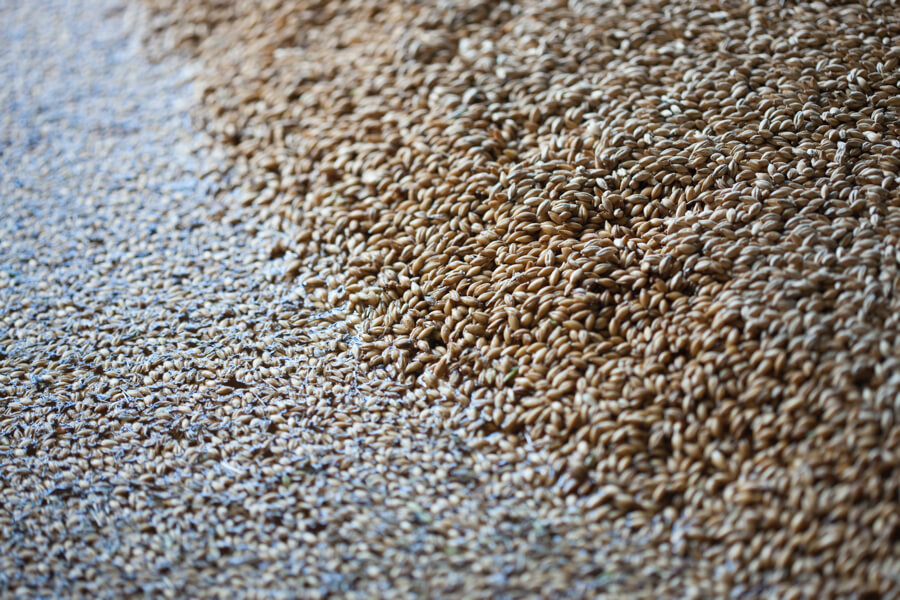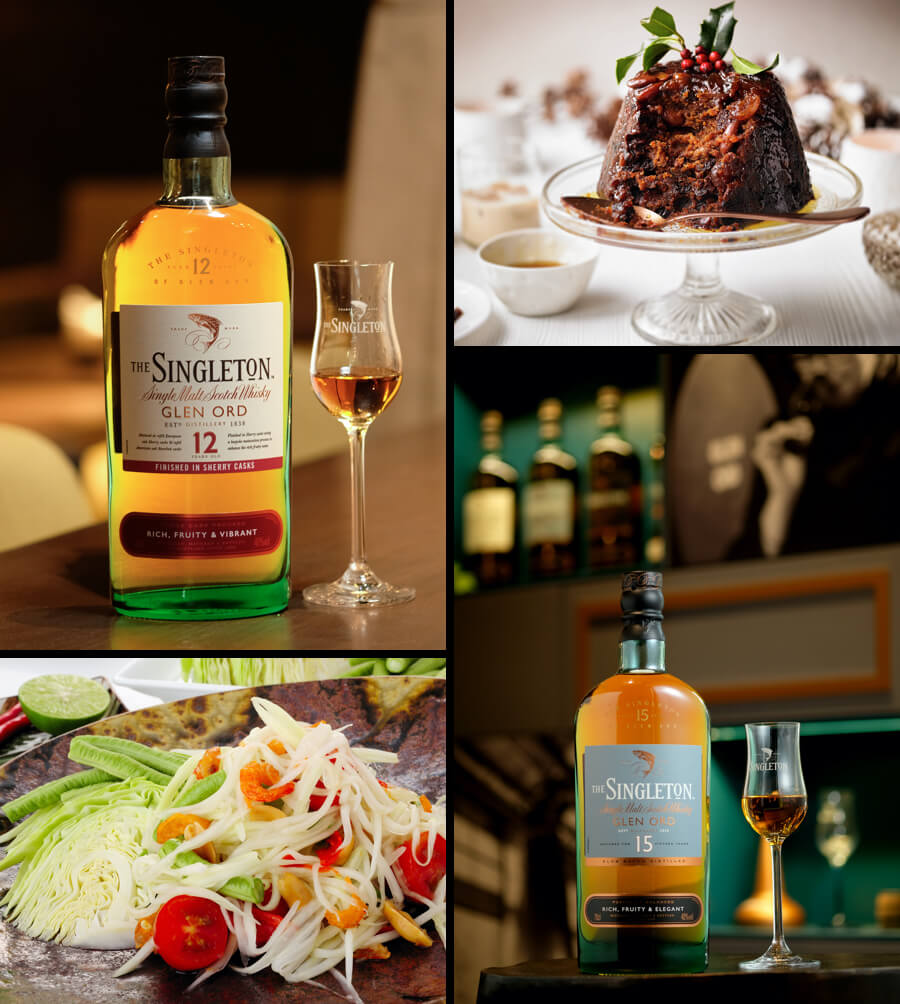Whisky, whose name originated from Celtic languages, containing amazing flavours and aromas that bring us unlimited vitality and inspiration. Counting from the grains and water it used, to the process of malting, mashing, fermentation, distillation, maturation and blending, each element gradually affects the formation of a whisky’s colour, aroma and flavour. Finally, a spectrum of diverse flavours and characters is created.
Vanilla, wood, floral, herbs, chocolate, berries, coconuts, cream, dried fruits, honey, spice, sea water, caramel and citrus… Various attractive notes appear when you taste a glass of whisky. They all come from the characters of the spirit itself and the casks it has been matured in.

 Whisky is made from different kinds of grains, including a certain proportion of malt. According to Scotch regulation, a malt Scotch whisky must be made from malted barley. As one of the earliest crops to be cultivated by humans, barley gives whisky the sweetness, complexity and soft texture. It even brings the spirit a malt-like cream flavour, that’s why other types of whisky will add a certain proportion of barley to ensure better taste. While malting, barley releases starch. In that period, distillers must speed up malting through steeping and precise turning to ensure the all barley grows at the same pace. They will then stop the germination by kilning, so as to ensure there’s enough starch for fermentation.
Whisky is made from different kinds of grains, including a certain proportion of malt. According to Scotch regulation, a malt Scotch whisky must be made from malted barley. As one of the earliest crops to be cultivated by humans, barley gives whisky the sweetness, complexity and soft texture. It even brings the spirit a malt-like cream flavour, that’s why other types of whisky will add a certain proportion of barley to ensure better taste. While malting, barley releases starch. In that period, distillers must speed up malting through steeping and precise turning to ensure the all barley grows at the same pace. They will then stop the germination by kilning, so as to ensure there’s enough starch for fermentation.
While kilning, the aroma of grain and starch in malted barley will transform into the sweet malt and biscuit aroma. That’s also the rawest flavour in ingredients. By heating the grains, they will also release sugar and make the whisky sweeter.
Each kind of grain has a deep impact on whisky flavour. Barley gives malt whisky the smooth and sweet character of biscuits and malts; corn gives bourbon whisky the multiple spice aromas and rich sweetness like milk and butter; rye gives a peppery spice and dried-fruit-like aftertaste; wheat gives a honey-like sweetness and texture, so do a sense of harmony.
Despite the fact that Scotch people do not pair whisky with meals, these flavours of grains make whisky and starchy foods a really good match. Be it the pure lovely smell of bread, buttery smell of pastries or the refreshing smell of fried spaghetti, every starchy sweetness can arouse unforgettable aromas and flavours.
 After kilning and mashing, malted barley may naturally generate fruity flavours in fermentation. The shape of distillers will also affect the flavour of whisky, forming a light or heavy character. However, the dominant flavour and character of a whisky mainly derive from maturation. From the moment distilled spirits are poured and sealed in charred casks, they start reacting with the oak, accumulating flavours day by day.
After kilning and mashing, malted barley may naturally generate fruity flavours in fermentation. The shape of distillers will also affect the flavour of whisky, forming a light or heavy character. However, the dominant flavour and character of a whisky mainly derive from maturation. From the moment distilled spirits are poured and sealed in charred casks, they start reacting with the oak, accumulating flavours day by day.
Charring purifies the taste of spirit, while the caramelised wood compounds will seep into the spirit, adding a gentle shimmer and aroma. The remaining parts will also release various aromas in maturation.
Owing to the long and prosperous sherry trading history between the UK and Spain, empty sherry casks have been the main containers to mature whisky. Whisky flavour is affected by interaction between wine absorbed by the casks and European oak - from the dry and light Fino to the full-bodied Oloroso. Sherry whisky is famous for its strong and attractive notes of dried fruits, nuts, dark berries and even chocolate. As for casks used to age American bourbon whisky, they are famous for an elegant taste of vanilla, coconut and cream, with occasional delicate floral and honey aroma. Both casks have their own specialities, it all depends on what you like.
Choosing suitable whisky from thousands of choices and blending subtly, blenders create whisky of the same taste. Some whiskies highlight the elegance of bourbon, while some feature the vivid character of sherry. There’s even more pursuing a smooth, complex yet perfectly balanced flavour. All of these traits would be the vital factors to consider in food pairing.
 Balance is the basic principle of whisky and food pairing. Food writer Yeh Yi-Lan believes ‘strong with strong, mild with mild’ is the easiest rule. Whisky has thousands of flavours, which makes it compatible with various kinds of food. The concept of ‘delicate to delicate, bold to bold’ can work the magic and make food even more delicious.
Balance is the basic principle of whisky and food pairing. Food writer Yeh Yi-Lan believes ‘strong with strong, mild with mild’ is the easiest rule. Whisky has thousands of flavours, which makes it compatible with various kinds of food. The concept of ‘delicate to delicate, bold to bold’ can work the magic and make food even more delicious.
‘Born on the island, Scotch whisky is supposed to be a perfect match with seafood. The umami taste of seafood can also resonate with whisky.’ says Yeh Yi-Lan. She believes umami also has a sweet aftertaste, which shares a lot of similarities with flavours of cask maturation. If we take the main characters of casks as pairing references, sherry whisky which has notes of dark fruits, chocolate, nuts and herbs is generally sweet and mellow. It can be paired with dishes with heavy taste such as braised, stewed, grilled and deep-fried food, not to mention chocolate desserts. As for the delicate and elegant bourbon whisky, it is nice to pair with a fresh salad, fruits, vegetables and even sashimi, highlighting its floral and coconut notes. Desserts made with citrus, vanilla, cream or honey can also match with bourbon whisky.
When we drink whisky solely, we can drink neat, or enjoy with water or ice; when we pair whisky with food, it’s suggested to add water or ice, or even soda water. In this way, we can avoid over drinking and keep sensitive taste buds. By adjusting the temperature and alcohol content of whisky, its various aromas and flavours can decorate the whole table of amazing food.
 ▼▼▼
▼▼▼